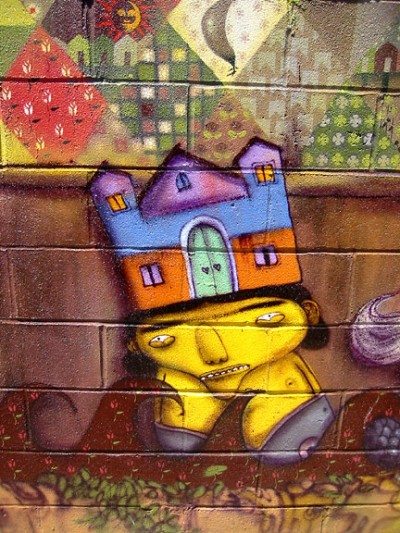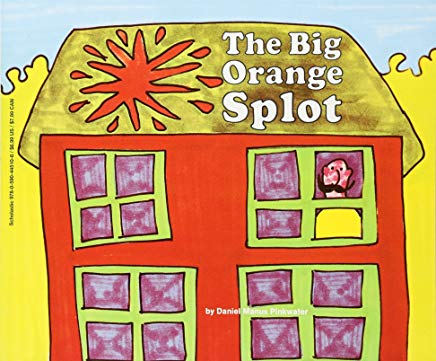The Blog
Blog Entry
Splot

A couple of years ago I put in a request with the landlord to have my windows replaced. The building where I live dates back to the 1920’s, I think, and those windows were at least half that old, indeed they looked pretty similar to the windows captured in old brown-and-white photographs taken of my neighborhood back when there were still a couple of sheep living in the vicinity of an elevated train. So they were historical, and they clattered in the wind, and guillotined fingers, and the views which they afforded onto the historical avenue running beneath them were often so distorted it was easy to imagine you were drunk.
My landlord is a generally accommodating type, and anyway sensitive to the liability of children’s fingers raining down on major thoroughfares, so he sent someone over, and there proceeded all of the usual noisiness and reshuffling and broken family heirlooms that comes from living in an apartment where there really isn’t any other place you can put that, I’m sorry. The new windows amazingly fit (unlike the new refrigerator installed some years before which was two inches too deep; I still can’t use my oven without opening the refrigerator first), though once they’d been riveted and caulked and opened and shut a few times, and more closely examined, some shaking of heads was beginning, and Spanish muttering which I understood to be not in the spirit of a job well completed.
The word “landmarks” slipped in there somewhere, and was often repeated, then one of the installers was not very optimistically sent out to the avenue where he stood studying, and apparently skeptical of the refurbishment. Eventually someone had the tentative little brainstorm of painting the exteriors of all six windows in exactly the brick-red shade of the rest of the edifice to throw off all of the little old ladies who are conceivably the watchdogs for these things, doddering along side-streets with maps and binoculars and brown-and-white photographs from ninety years ago. Just itching for a tussle. I live, to this day, in some fear of such ladies.
Thing is, I get it, what they’re up to, especially when there is any history at stake, especially when it’s history that is central to the enduring character of a neighborhood, and especially when millions of people from all around the world come to witness and revisit it, that and the giant glass cube around the corner where they sell iPads. I also get it, I guess, when utopian communities in Florida prohibit the evolution of chicken farms in their midst, or anyway lawns that are taller than two inches, or gables that are not within the regulation coral hue.
Yeah, sometimes I wish I didn’t get it as readily as I do. These things can turn fascist quicker than a dotted line.
The Big Orange Splot is a curiously slapdash looking book by the otherwise redoubtable Daniel Pinkwater, who usually farms his illustrating out to someone else. Perhaps this is significant. Mr. Plumbean, seen looking out his window on the cover, vaguely resembles the photos I have seen of this author. And it’s a pretty exuberant fable for such a simply painted treatment. There isn’t any history here mucking up our judgement, and not a lot of narrative beyond this: a seagull flying over Plumbean’s house one day drops a can of orange paint on the roof (“no one knows why”), and everyone agrees that Plumbean should get cracking and besmirching. This isn’t adversarial; Plumbean himself is invested in the neatness of the neighborhood, indeed that seems to be its only sustainable character. There’s something compelling about the splot however, and maybe even magical: when Plumbean finally does get around to addressing the asymmetry, his paint job doesn’t stop there, in fact it’s the gift of that seagull that is suddenly holding everything together:
“There was the big orange splot. And there were little orange splots. There were stripes. There were pictures of elephants and lions and pretty girls and steam shovels.”
Pretty girls? Cracks me up every time. Though not so much the neighbors: “Plumbean has popped his cork, flipped his wig, blown his stack, and dropped his stopper.”
A couple of palm trees later, and baobabs, and frangipani, and a hammock, and an alligator, one of those neighbors is dispatched to go reason with the cork-popping, wig-flipping, hawser-slipping Plumbean. Though Plumbean is ready with an answer – “My house is where I like to be and it looks like all my dreams” – the two of them sit through the evening drinking lemonade under the palm trees, alligator dozing, frangipani blooming, evening turning to night. They sit and they talk until morning.
Right here you can probably guess at the ending, but I swear it didn’t really matter to me after that. Despite, or maybe because of, Pinkwater’s limitations with a paintbrush I cannot think of many more promising powwows in the picture book firmament. For most of my adulthood now I have imagined myself reaching critical junctures like this, and taking my time, though of course I blow right through them in the end, if I even recognize them first. This notion that we can actually reason with one another – and the possibility that many thoughtful hours are even necessary to completely make a case – speaks to complexities where we often assume less, still what comes first, the conversation or the dream?

